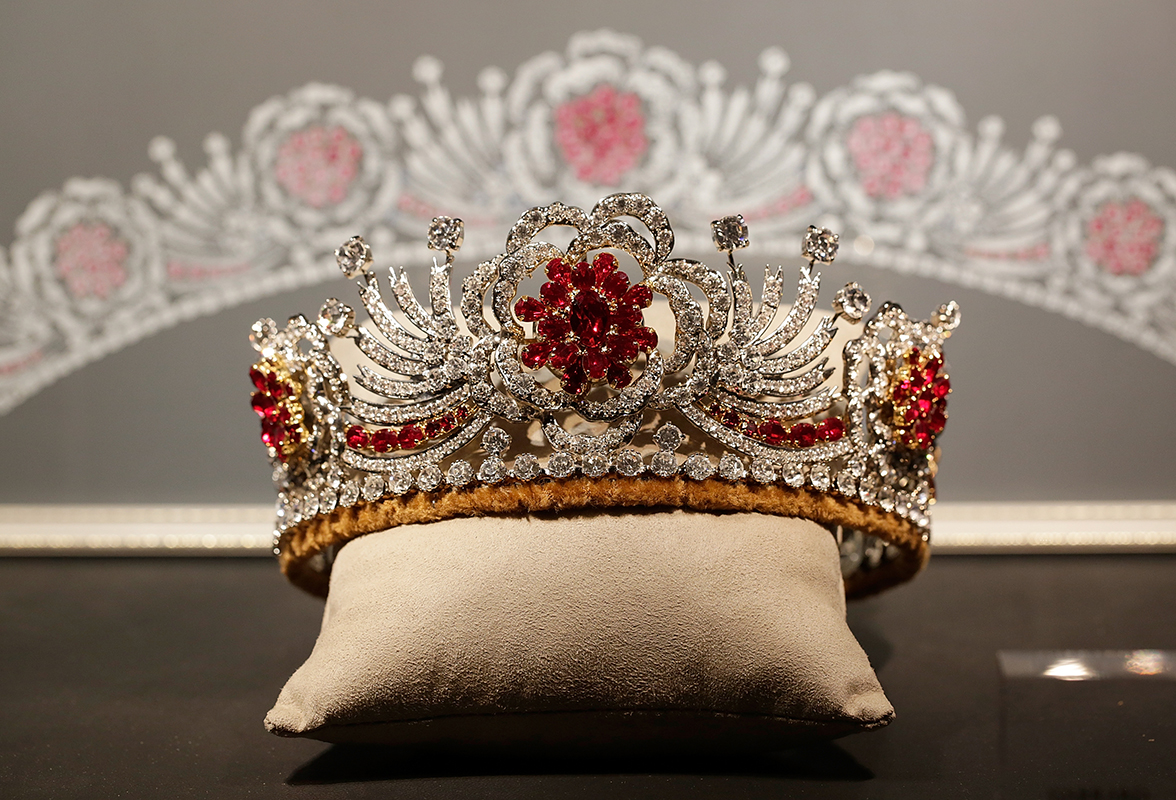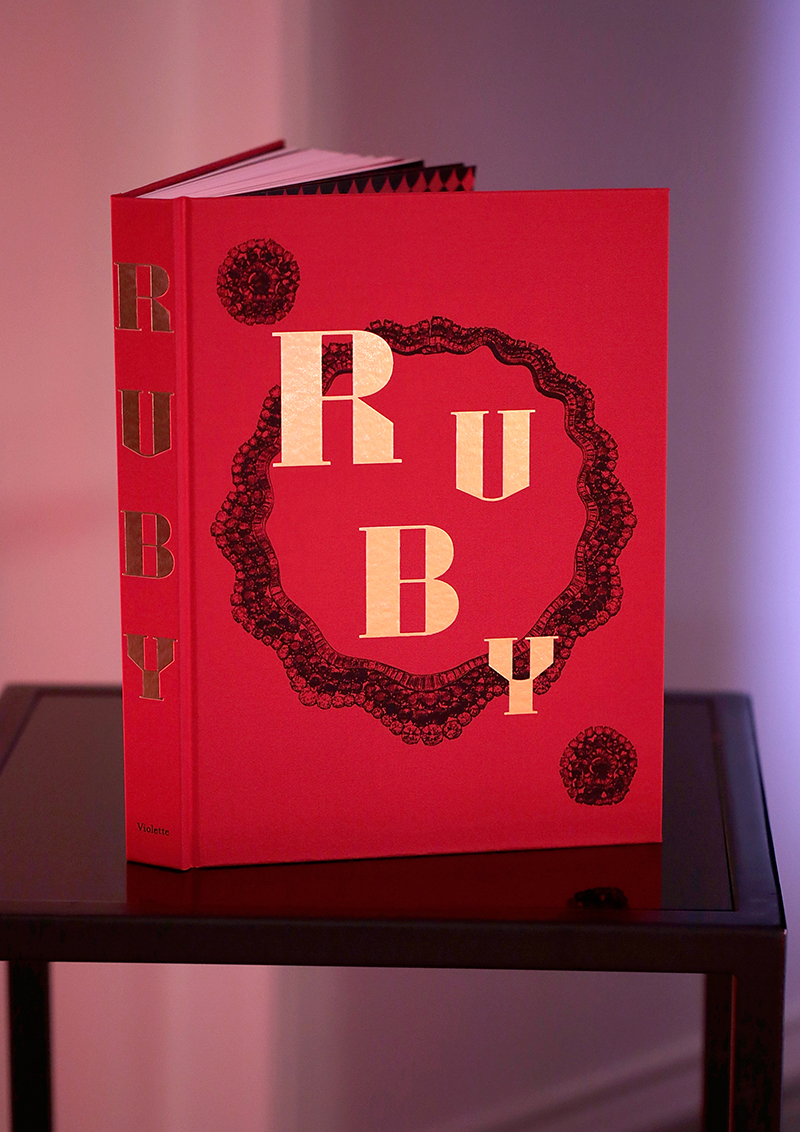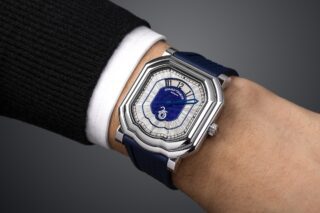This website uses cookies so that we can provide you with the best user experience possible. Cookie information is stored in your browser and performs functions such as recognising you when you return to our website and helping our team to understand which sections of the website you find most interesting and useful.
As Gemfields launches ‘Ruby: The King of Gems’ at Somerset House, we look closer at these ancient gems
By Michelle Johnson | 5 December 2017 | Style
Gemfields’ ambitious coffee table book explores the history and intrigues of these stunning investment jewels

Gemfields jewellers headed to London's fashionable Somerset House on Tuesday 28 November to launch their new coffee table tome 'Ruby', a close look at the history, intrigue and beauty of Audrey Hepburn's favourite gem. Fine jewellery expert Joanna Hardy travelled from Myanmar to Mozambique to write the book in collaboration with the brand, which covers the 500-million-year history of the ruby, and famous gems that have been in the private collections of everyone from The Queen to Elizabeth Taylor.
The rarest of all coloured gems, the ruby is a premier investment piece for collectors, as well as a stunning token of passion and, traditionally, of power, often referred to as the King of Gems. To celebrate the book, Gemfields – which owns sustainable ruby, amethyst and emerald mines supplying jewellery houses including Cartier, Van Cleef & Arpels and Boucheron – has shared this exclusive excerpt with Tempus. Read on to delve into the fascinating world of the Mozambique ruby mine of Montepuez.
Excerpt from 'Ruby: The King of Gems'
"The first thing one notices when coming from an urban metropolis such as London is Africa’s vast skies and the wonderful sculptural trees. When we finally arrived at our destination, the earth was ochre red, rich in iron. It was April and the rainy season was about to begin, but it was still a pleasant temperature. We were shown to our pristine rooms, each with impressively crisp white linens and towels, tea and coffee and a thoughtful welcome letter from the mine manager.
This was the Montepuez ruby mine, which had only been opened in 2011. The amenities were still new, as was the mine, itself just a short drive further into the African bush. The Montepuez ruby deposit covers approximately 33,600 hectares and is located in the northeast of Mozambique in the Cabo Delgado province. The exciting prospect of Mozambique ruby is that the deposit produces a wide variety of colours: it has rubies that fluoresce and are close in colour to the Burmese gems but others that look similar to the Thai stones. The ongoing geological exploration will no doubt lead to the discovery of further significant deposits. >>
Related link: De Grisogono’s Fawaz Gruosi reveals his latest collection

The earth here glistens with mica flakes, suggesting that rubies are nearby, and when you walk across the baked red earth the cracking sound is deafening. When your eyes focus on the red earth, you suddenly see ruby crystals everywhere. Exploration is still in its infancy, but the importance of the Montepuez deposit grows considerably as more geological information comes to light. This ruby deposit has a metamorphic origin, with both the primary hard rock deposit as well as secondary elluvial deposits (which occur above primary sources that have been exposed by the action of wind) and alluvial deposits (material deposited by streams and rivers), which are both being currently mined.
Rubies are found in very weathered rock, composed mainly of feldspar and amphibole at depths of 1 to 10 metres. Unlike rubies from other countries, Mozambican rubies often have amphibole and chalcopyrite crystal inclusions, which reflect the host amphibole-related deposits that are found mainly in East Africa. Sometimes amphibole crystals are transparent, thin and elongated, which will give the appearance of coarse needles. Another common inclusion is hexagonal mica crystals. Some stones show a slight milkiness, which comes from hexagonal and triangular bands of whitish particles, all of which are useful pointers in determining the Mozambican origin of an unheated ruby.
The deposits so far produce three distinct categories of ruby, all in large volumes: there is the clean, high-quality cuttable material; material for cabochon use; and the lower-grade material that can be heated, glass-filled or reconstituted. Colours range from slightly purplish red to red with none of the orangey component that is commonly seen in many other African rubies. It appears to be iron-rich like other rubies from East Africa. Some exceptional large pieces of rough have been recovered that are gem quality and have good transparency, producing stones up to 20 carats in weight when polished. Considering large ruby rough from Burma is virtually unheard of, this makes the Mozambique deposit even more exciting.
The two classic rubies in the gem market are the Burmese and Thai rubies, which are known respectively for their strong and weak fluorescence. Different levels of fluorescence are caused by the stone’s chromium content, which affects how light interacts with the stone and gives the ruby its red colour: the higher the chromium levels, the more fluorescent the stones will be and the brighter they will ‘glow’ red (although extreme levels of chromium can be detrimental to the stone’s appearance). Stones from Mozambique are also chromium-rich, and so many closely resemble the prized Burmese stones. It is important to remember, though, that every stone is unique and that colours will vary within each deposit. Despite these variations, the Mozambican ruby is creating great excitement in the jewellery community."







